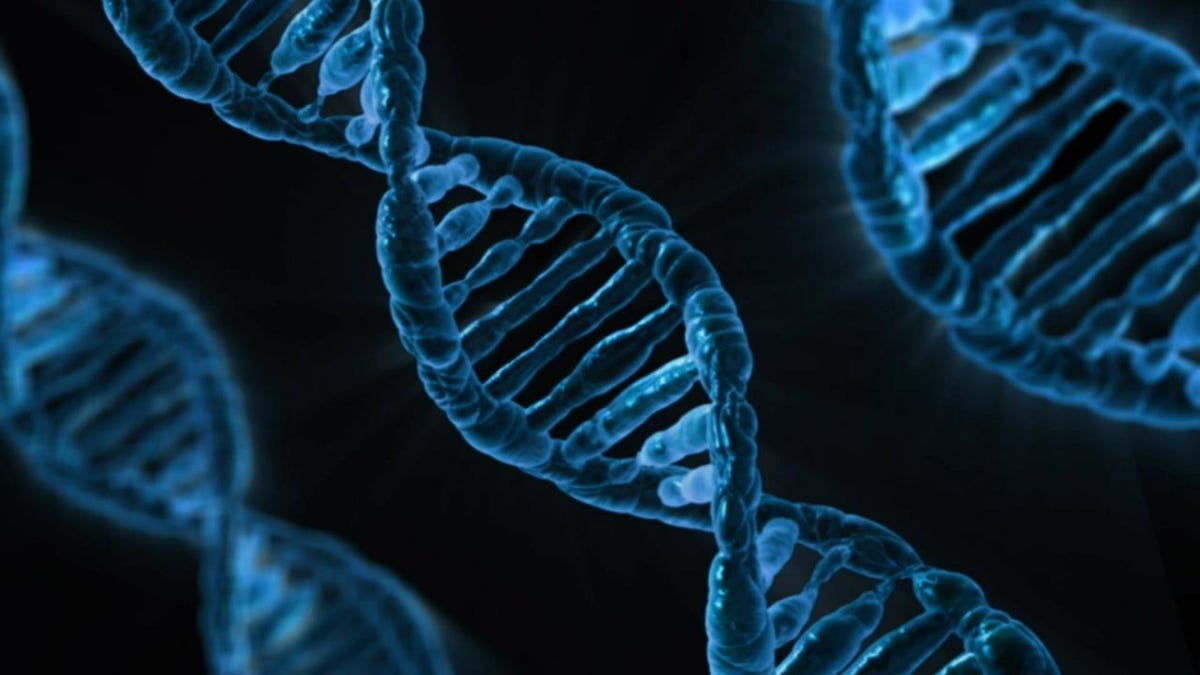See the first movie uploaded to DNA of living cells
Harvard scientists hope their molecular equivalent of an airplane "black box" could help unlock mysteries of human biology.

For the first time, a video has been encoded in the DNA of a living cell.
Pixabay.com/PublicDomainPicturesFrom one of the scientific minds working to bring wooly mammoths back from extinction comes an entirely new kind of movie: one that's been recorded and played back from the DNA of living cells.
A team at Harvard University's Wyss Institute for Biologically Inspired Engineering led by George Church has built the first so-called "molecular recorder" using the well-known CRISPR gene-editing system.
The aim is to be able to record data in the genomes of living cells that can be accessed later, providing insights that could help fight disease and deepen our understanding of biology.
To prove such a seemingly far-out thing is possible, the team successfully encoded complex information -- including an image of a human hand and a sequence of a galloping horse taken from one of the first motion pictures ever made -- into the DNA of bacteria cells.
Researchers encoded the video on the left into living cells, then retrieved the data via DNA sequencing, which resulted in the copy on the right.
This doesn't mean you're going to be watching the latest season of "Game of Thrones" via your parakeet or whatever genetically modified pet you choose to store your video files on in the future, though it does technically make such a future possible.
Never doubt that truth is stranger than fiction, folks. Church is also behind an effort to sequence the genome of the woolly mammoth to reintroduce the species to the Siberian tundra as part of a long-shot gambit to fight climate change.
Church and his team want to give living cells the biological equivalent of the "black box" found in aircraft that records all sorts of key data.
"We want to turn cells into historians," explained neuroscientist Seth Shipman, Ph.D., a post-doctoral fellow working with Church, in a statement. "We envision a biological memory system that's much smaller and more versatile than today's technologies, which will track many events non-intrusively over time."
Being able to then tap into cells' internal data recorders could become an invaluable tool for scientists.
"We could potentially use them like a recipe to engineer similar cells," Shipman said. "These could be used to model disease -- or even in therapies."
Ultimately, the same technology that today is being demonstrated with vintage images of a galloping horse could be used to unlock one of the great remaining mysteries of human biology: the workings of the brain.
"We want to use neurons to record a molecular history of the brain through development," Shipman said. "Such a molecular recorder will allow us to eventually collect data from every cell in the brain at once, without the need to gain access, to observe the cells directly, or disrupt the system to extract genetic material or proteins."
The details on making molecular movies appear in the latest issue of the journal Nature. No animals were harmed in the process of encoding the films mentioned above, but the same can't be said for all bacteria cells.
Crowd Control: A crowdsourced science fiction novel written by CNET readers.
Solving for XX: The tech industry seeks to overcome outdated ideas about "women in tech."

